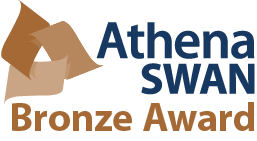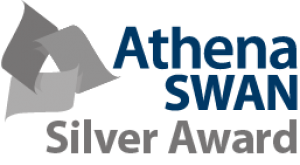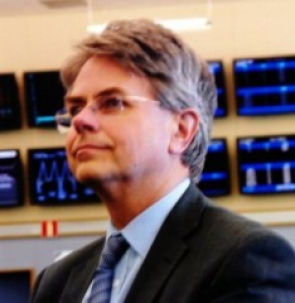You are here
- Home
- Professor Robert Lambourne
Professor Robert Lambourne
Professional biography
Robert Lambourne is Professor of Educational Physics at the Open University. He joined the OU after obtaining a PhD in the theory of fundamental particles from the University of London, and completing a temporary lectureship in the Department of Mathematics at the University of Durham, where he taught undergraduate modules on relativity and mathematical methods as well as contributing to an MSc course on differential geometry. He has now worked at the Open University for more than 30 years.
During his time at the Open University, he has progressed from Lecturer to Senior Lecturer to Professor, leading and/or participating in a number of educational development projects, while teaching on a wide range of modules in physics, astronomy and applied mathematics. He currently chairs the team responsible for the introductory science module, S104 Exploring Science. He was Chair of the Department of Physics and Astronomy for three years, and then spent five years as National Director of the Physics Innovations Centre for Excellence in Teaching and Learning (piCETL). He has devoted much of his career to trying to improve physics education at all levels, particularly in international contexts.
A former Vice-President for Education at the UK Institute of Physics (IOP), and a past Chair of the Physics Education Division of the European Physical Society (EPS), he was a member of the International Commission on Physics Education from 2005 to 2014 and Chaired the Commission between 2011 and 2014. His work in educational physics has been recognized by the award of the IOP Bragg Medal and Prize in 2002, a UK National Teaching Fellowship in 2006, and the 2014 Gero Thomas Medal for his contributions to the EPS.
Always a strong supporter of efforts to increase public engagement with science, Bob Lambourne has long been involved in outreach activities across a range of media. His work in this area naturally extends beyond the Open University, and has ranged from participation in the Programme Planning Committee of The Ediburgh Intrnational Science Festival to the Vice-Presidency of the Wycombe Astronomical Society. For many years he has been the Director of Studies of the Public Programme in Physical Sciences at the Oxford University Department for Continuing Education (OUDCE). That programme includes an annual Astronomy Weekend and an annual Brain Day (emphasising physical measurment techniques such as fMRI and EEG), as well as several one-off events that target topical issues and areas of enduring public interest across the physical sciences.
Current research interests are focussed on physics glossaries and the use of clear terminology in education, several different aspects of the use of history in the teaching of physics, and the Skyworld approach to familiarising novice astronomers and members of the general public with the layout of the night sky and the use of the celestial sphere. He is also co-supervising a PhD student based in Africa who is investigating the teaching of experimental physics in African secondary schools.
Amongst the books he has written, co-written and/or edited are several university textbooks, many of them produced specifically for Open University module teams and containing substantial contributions from other team members. Those published since 2000 include:
The Restless Universe (with John Bolton; Open University Press, 2000, ISBN 0-7492-8071-9)
Describing Motion (Institute of Physics Publishing 2000, ISBN 0-7503-0715-3)
Predicting Motion (with Alan Durrant; Institute of Physics Publishing, 2000, ISBN 0-7503-0716-1)
Basic Mathematics for the Physical Sciences (with Mike Tinker; 2000, John Wiley, ISBN 0-471-85206-6)
Further Mathematics for the Physical Sciences (with Mike Tinker; 2000, John Wiley, ISBN 0-471-86691-1)
Introducing Astronomy (with Simon Green; 2005, Open University Press, ISBN 978-0-7492-1872-0)
Wave Mechanics (with John Bolton; 2007, Open University Press, 007, ISBN 978-0-7492-1898-0)
Relativity, Gravitation and Cosmology (2010, Cambridge Univ. Press, , ISBN 978-0-521-76119-2)
Introduction to Galaxies and Cosmology 2nd edition (with Mark Jones and Stephen Serjeant; 2015, Cambridge Univ. Press, ISBN 978-1-107-49261-5).
A work of possible interest to physics educators, particularly those involved with multimedia is:
Multimedia in Physics Teaching and Learning: Proceedings of the 14th MPTL Workshop, (Edited by
R Lambourne, M Michelini, and L Mathelitsch; 2010, Societa Italiana di Physica).
Also of interest to physics educators may be the chapter on physics teaching in distance education (co-authored with Nick Braithwaite) due for publication in August 2016 in:
Teaching Science Online; Practical Guidance for Effective Instruction and Lab Work (Edited by Dietmar Kennephol, 2016, Stylus Publishing,
Paper: 978 1 62036 188 7;
Cloth: 978 1 62036 187 0;
Lib E-Book: 978 1 62036 189 4).
Publications
Journal articles
The Real Aims that Shape the Teaching of Practical Physics in Sub-Saharan Africa (2020)
Babalola, Femi E.; Lambourne, Robert and Swithenby, Stephen
International Journal of Science and Mathematics Education, 18(2) (pp. 259-278)
Laboratory-based teaching and the physics innovations centre for excellence in teaching and learning (2007)
Lambourne, Robert
European Journal of Physics, 28(3) (S29-S36)
Einstein at a distance (2005-11)
Lambourne, Robert
European Journal of Physics, 26(6) (S135-S140)
Authored books
An Introduction to Galaxies and Cosmology (2nd ed) (2015-01)
Jones, Mark H.; Lambourne, Robert J. A. and Serjeant, Stephen
ISBN : 9781107492615 | Publisher : Cambridge University Press/Open University | Published : Cambridge
Conference items
The Multimedia in Physics Teaching and Learning community (2019)
Braithwaite, N St.J and Lambourne, Robert
In : The Multimedia in Physics Teaching and Learning community (13-14 Nov 2017, The Open University, Milton Keynes) (p 11001)




